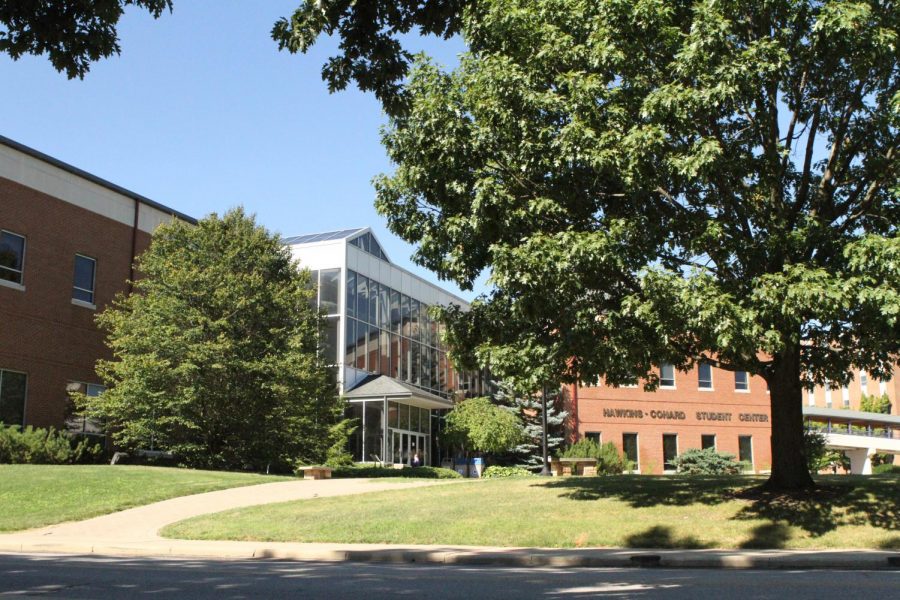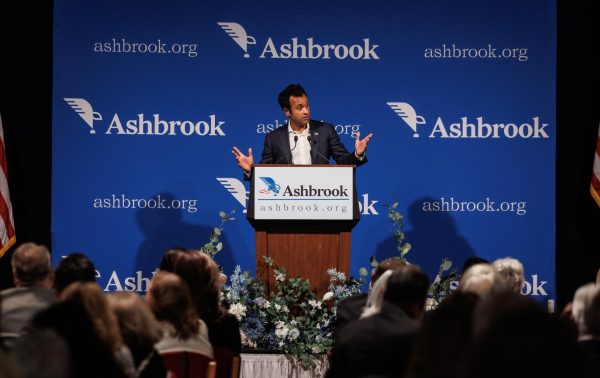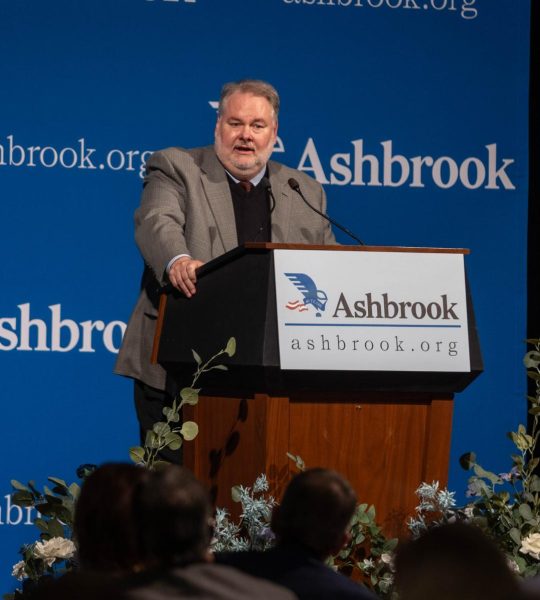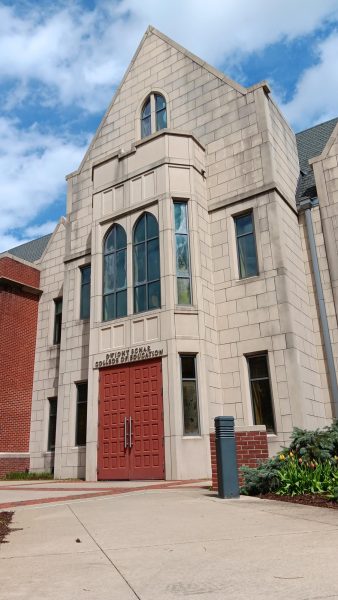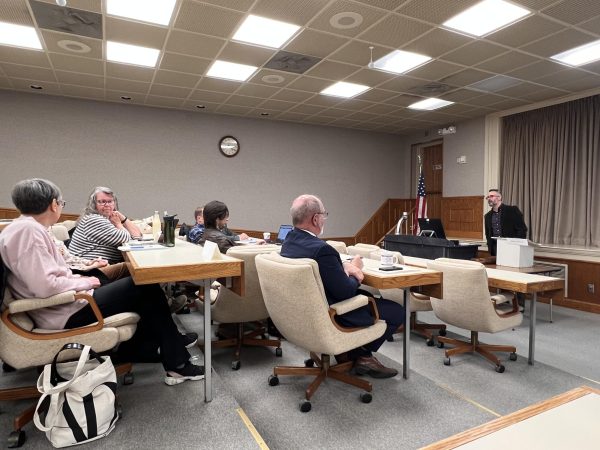Budget cuts have impact on campus, AU staff numbers begin to decrease
13 to 14 full-time staff positions were eliminated, by the end of the semester, it will be 20.
Talks continue about the impact of the budget deficit and how it will affect the future of AU, students, staff members, and faculty.
On Monday, 13 to 14 full-time staff members were notified that their jobs were being eliminated as part of the deficit reduction plan, with the total reaching 20 by semester’s end, AU President Dr. Carlos Campo said.
The remainder of the employees that have yet to be let go have expiring contracts and will not return in the fall of 2023, he said
Campo said that the official list of the staff positions let go would not be released due to confidentiality reasons.
A recent list was given to the student body of questions and answers about the budget deficit, with the questions being complied by the student senate for the administration to answer.
The list of questions and answers are as follows:
Q: How were the decisions about budget cuts made?
A: Two working groups composed of faculty, staff and administration were created to review every area of the institution. The working groups, in conjunction with academic deans, consulted and reviewed potential adjustments, while keeping the AU student experience at the forefront.
Q: How will the budget cuts affect scholarships?
A: Student scholarships, both academic and non-academic, have not been adjusted.
Q: How many classes were canceled or changed due to budget adjustments? And, what will students who need a certain class have to do to make-up that class going forward?
A: No courses needed for graduation or for critical progression in a major were canceled. Sections of courses may have been combined. For specific courses that a student would like to take, they should work with their academic/faculty advisor to review the department rotations for the course to determine the next time it will be offered. Arrangement of a course-by-conference or course substitution is used to address some of these needs through advisors and department chairs.
Q: How will these budget adjustments impact the professors’ course load?
A: Course load is complex and is set by the program needs. Course loads for faculty are set by contract standards and these expectations are being honored.
Q: Why are cutting and combining classes an effective budget management tool?
A: Every semester, academic affairs makes similar adjustments to the course schedule as we seek to match the available course sections and seats to the needs of students. We strive to use the resources as efficiently as possible each semester.
Q: Were cuts made to academics, rather than athletics or non-academic areas?
A: All areas of the institution were reviewed for budget efficiencies and adjustments. Our current estimates indicate that the fiscal impact between academic and non-academic areas will be fairly equal.
Q: Will there be a list of who is being let go? If names can’t be listed, can the job positions be released?
A: No and no. Due to HR and legal compliance, a list of impacted employees will not be made public. Personnel information such as this is privileged and confidential by labor laws.
Q: How were the employees selected to be let go?
A: There was thorough evaluation of positions and review of the impact of eliminating said positions. There was also discussion about duplication of positions and whether another area or position on campus could absorb additional duties and responsibilities. Most vacant positions were removed to reduce the overall budget deficit and to decrease the number of impacted employees.
Q: How do budget cuts affect renovations, like in the library?
A: Renovations for the library are completely donor-funded and in progress.
Q: Is there a possibility of donor gifts to keep employees, instead of using it for renovations?
A: Donor gifts must legally be used for their intended purpose. They cannot be used as unrestricted funds unless designated as such.
Q: Will there be a statement to donors about the financial situation at the university in order to ask for further support?
A: The president and advancement department continue to work with donors and friends for gifts that will positively impact the fiscal health of AU. We are very blessed and thankful to have generous donor support.
Q: What does the future hold for the budget at AU?
A: The university leadership team continues to monitor all aspects of the institution, including broad strategic discussions of bringing AU to a stable financial position. The focus always centers around the AU mission and the student experience.The Strategic Enrollment Plan and the Rich History/Bold Future 2025 university strategic plan both place an emphasis on student recruitment and retention.
Q: What are some alternatives being looked at to generate revenue for the university as a long-term solution to the loss of revenue and budget cuts?
A: The university is in the process of reviewing additional revenue-generating ideas, including certificates, micro-credentials and expansion of the College Credit Plus program. Non-academic areas are reviewing capacity to host public events and other revenue-generating conferences.
Q: Is the nationwide decline in nursing students affecting the College of Nursing and Health Sciences?
A: CONHS, specifically the Mansfield campus, is a vital part of Ashland University. CONHS is exploring ways to increase overall enrollment in their academic programs. One of the ways that will assist in enrollment and retention efforts for nursing and dietetics is the recent $630,000 grant AU received through the Choose Ohio First program.
Q: What is the latest on the ongoing review of the Correctional Education program and is that adding pressure on the university’s budget?
A: The audit is in a holding pattern, and it has no impact on the current budget adjustment.
The faculty first learned of the need for cuts at a faculty senate meeting held on Dec. 9. At the meeting, Campo stated the deficit is now projected to be at $4 million instead of the original $2.7 million for the 2023 budget.
The deficit of $2.7 million was approved back in October during the Board of Trustees meeting, and according to board chair, Jim Hess. It was part of a “5-year budget projection that allowed for some deficits in the short term [moving] toward a profitable future.”
Later, as the 2022 fall semester ended, the faculty and staff received a message from Campo on Dec. 20 at 5:25 p.m. detailing all the recommended changes by the Executive Committee of the Board of Trustees to reduce the deficit not to pass $2.7 million.
The recommended changes were as follows:
- There will be a minimum of 15 students per course for all spring courses—any exceptions must be approved by the Provost and President.
- Increase class caps by 25% or up to room capacity for spring 2023 courses as possible—any exceptions must be approved by the Provost and President.
- Eliminate all administrative release time for faculty immediately—the Provost and President are authorized to identify release time that will be granted to support student programming.
- Require all professional instructors to teach a 5/5 load vs. 4/4 load (this action will require a revision to faculty rules and regulations).
As he stated, Campo created two working groups to evaluate “all areas of the university,” and the “final result will be strategic and not-across-the-board equal percentage reductions.”
The Board of Trustees recommended these suggestions because of the immediacy of the budget deficit falling mid-semester.
Most classes that were canceled were sections that combined quickly and were mainly core classes, according to Student Body President Tiffany Sims, but it is unknown at the time how many were canceled.
Sims also mentioned that there was no mass concern from the student body about class cancellations.
There were also a few other cuts made in the academic departments.
AU Provost Amiel Jarstfer stated, “Active personnel searches were suspended and supplemental contract budgets reduced.”
On Jan. 10, a town hall meeting was held with staff and faculty members to address the deficit and concerns.
The two working groups identified how much could be cut, to be at most $2.7 million.The non-academic working group identified cuts of $1.1 to $1.2 million, while the academic working group identified amounts of $1.1 to $1.3 million.
One of the significant areas touched on in the town hall meeting was restructuring, which looked at the different areas of the university.
“We’re certainly looking at restructuring in every area, you know, so from corrections to athletics, from the seminary to student affairs, every area has been reviewed, and some of the information is still coming at us,” said Campo.
One of the areas in the restructuring that was stressed involved athletics with the possibility of moving from Division ll to Division lll.
“So when you restructure athletics, we looked at everything and are still at least discussing the idea of are we in the right division, is division to the right place for excellence?” Campo said. “We believe that it is. Division one doesn’t even seem feasible. That would be a huge investment. Division three doesn’t feel right, either. It’s a different profile of institutions if you look at Division three overall, but Division three eliminates the athletic scholarship and shifts those academic staff.”
Another area of restructuring was branding Ashland University as a conservative institution.
Dr. Cory Hillman, assistant professor of communication studies, said, “[Dr. Campo] mentioned maybe one thing that Ashland University has to do is brand itself as a conservative institution, and when you are in service to a political ideology, haven’t promoted unfettered intellectual inquiry because when you are excluded from a political ideology that determines what is true, what questions you are allowed to ask.”
Campo addressed this by wanting to conserve more of the principles, values, and ideals that make up Ashland as a whole from its heritage, which is why Ashland has not been branded as a conservative institution.
One of the major causes of the deficit was enrollment which was heavily addressed during the town hall.
This year’s enrollment numbers were primarily down in graduate students and only slightly in undergraduate, resulting in the deficit. However, the board and the administration are focusing on 2024 to boost recruitment numbers.
“There is a lot of momentum right now for we have got to improve our recruitment, said Jim Hess, chair of the Board of Trustees. We have got to figure out a way to be more effective in recruiting students full time, and so that’s all part of what we’re trying to do.”
The impact of the deficit is believed by the administration to be effectively managed over time.
“We believe that the approved deficit can be effectively managed without a long-term impact, thanks to our excellent cash position and conservative approach to budgeting overall,” said Campo.
The Board still has confidence and trust in Campo and supports the administration’s decisions.
This is a developing story.


